
Do They Have Electricity in France?
Yes, of course France has electricity, but why do I mention this?
I write and teach courses on Linux and other forms of Unix, information security, and networking. Many of the courses run in the Washington DC area, so many of the students are from various U.S. Government agencies. I sometimes put up a slide show of pictures during the lunch hour, typically a large collection of pictures from a couple of canal boat trips in France.
One of the students one week was a civilian employee at the U.S. Navy's Space and Naval Warfare Systems Command or SPAWAR, which since then changed its name to the Naval Information Warfare Systems Command or NAVWARSYSCOM. It's where civilian engineers and scientists develop systems to defeat sophisticated threats in the naval aerospace and cyber environments. Notice that this means understanding and anticipating:
- Foreigners
- Technology
- Any combinations of Foreigners and Technology
Part-way through the lunch hour's collection of pictures of French canals and their surroundings, he asked, "Do they have electricity?"
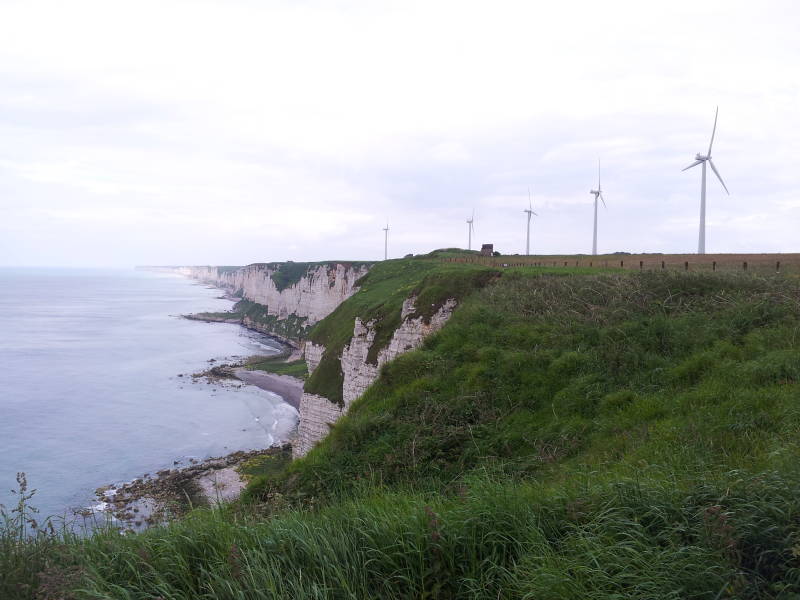
Wind turbines generating electrical power on
the cliffs of Cap Fagnet above
Fécamp on the Normandy coast.
Fécamp and the Normandy coast
I started explaining that the only electrical power on board was 12 volts DC, used to run small interior lights and fans plus the automotive stereo system. If you wanted 230 volts AC, you would have to plug in to a shore power box at a marina or village pier, although that wasn't generally available.
No, no, he didn't mean on board the boat. He meant in French villages.
That's right, he figured that the major cities in France probably had electrical service, but he honestly didn't know if citizens of France outside the two or three largest cities had access to electricity. Remember that his job involves understanding and anticipating foreigners' use of technology.

Centrale nucléaire de Belleville, near Belleville-sur-Loire, with two reactors producing a total of 2,620 megawatts of electricity.
Yes, France Has Electricity
|
U.S. Electrical Sources, 2010 |
|
| Coal | 44.5% |
| Gas | 24.1% |
| Oil | 0.9% |
| Nuclear | 19.4% |
| Hydroelectric | 6.1% |
| Wind | 2.3% |
| Wood | 0.89% |
| Other bio | 0.45% |
| Geothermal | 0.36% |
| Solar | 0.022% |
We tried to explain to him that France has managed to tame the electron (as has the rest of Europe), that France is decades ahead of the U.S. in nuclear power generation and distribution, and that the largely electrically powered French rail system makes America's look relatively primitive.
He kept sputtering that France was obviously a primitive country, "Everyone knows that", and insisting that it was very likely that many people in France went without electricity. Well, that's what a steady diet of Fox "News" tells him. Meanwhile, in an actual primitive region like the US state of Indiana, 0.7% of the state's citizens refuse to live in a home with electrical service because their religion prohibits it.
Enjoy my pictures of France, and keep in mind that they do have electricity there. They just don't squander as much per person as in the U.S., nor do they burn nearly as much dirty coal to generate it.
| 2009 | France | U.S. |
| Total production | 570 TWh | 4,244 TWh |
| Per capita use | 7,951 kWh | 12,977 kWh |
| % nuclear | 80.1% | 20.1% |
| % fossil fuel | 10.4% | 68.5% |
France has the world's highest percentage of its electricity generated from nuclear power, at just over 80%. Ukraine is second at 46.7%, followed by Sweden 42.6%, South Korea 34.0%, Japan 24.0%, Germany 23.5%, U.S. 19.3%, Russia 15.7%, Canada 14.4%, and China 2.0%. France had over 16% of the world's installed nuclear power generation in 2008.
Électricité de France is the main producer, and it is the second largest electric utility in the world. It operates world-wide, including EDF Inc in the United States, where it fully controls Unistar Nuclear Energy, EnXco, EDF Trading North America, and has a 50% interest with Exelon in Constellation Energy Nuclear Group. Unistar operates four nuclear power plants in the eastern United States. EnXco builds and operates wind and solar electrical power projects across the U.S.
ITER, the International Thermonuclear Experimental Reactor, is the world's largest nuclear fusion research and engineering project. They're working to develop a system to generate electricity from from nuclear fusion. And yes, it's located in south-eastern France, a short distance north of Marseille.
The Tricastin nuclear facility along the Rhône river north of Avignon is one of the most significant nuclear technology sites in the world. Here you see the Tricastin facility as seen from the TGV speeding down the opposite bank of the Rhône. The TGV is an electrically powered train moving at 300 kilometers per hour.
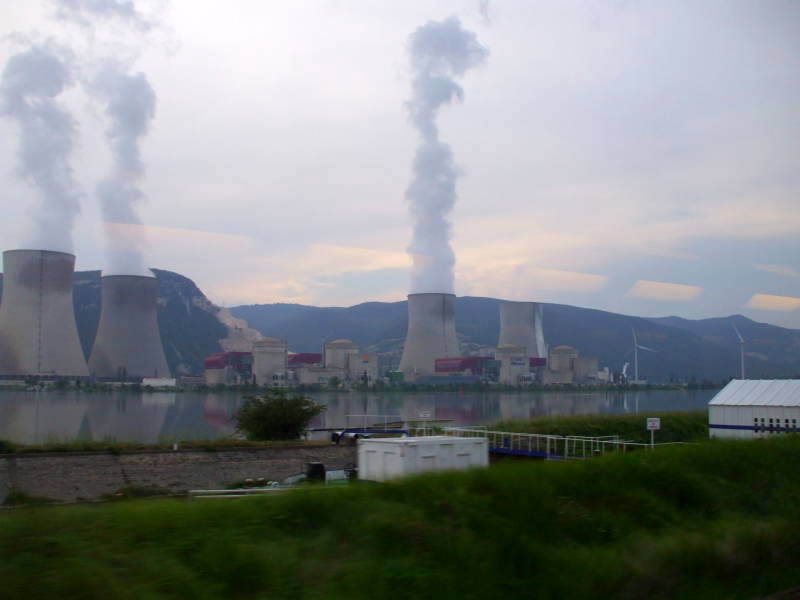
Électricité de France operates a nuclear power plant here with four pressurized water reactors producing 915 MW each. They produce about 25 terawatt-hours per year, about 6% of France's electricity, but roughly two-thirds of that goes directly into the Georges Besse Eurodif uranium enrichment plant. Transmission losses were minimized by putting the enrichment plant right next to the power source. This is being replaced by a new facility within the same site.
Comurhex is a uranium fluoride conversion plant. It processes a quarter of all world production of uranium and almost all of that used in France. Natural uranium, called "yellowcake", is first purified and converted to uranium tetrafluoride, UF4. That is then converted into uranium hexafluoride, UF6. The uranium hexafluoride is then enriched to become useful as fuel.
Commissariat a l'Énergie Atomique (CEA) de Pierrelatte is a military nuclear research and uranium enrichment facility. CEA in France is much like the Department of Energy in the U.S., involved in both nuclear power and nuclear weapons development, production and maintenance.
La Base Chaude Opérationnelle du Tricastin or BCOT specializes in nuclear maintenance. They maintain and store equipment from nuclear plants, some of it contaminated.
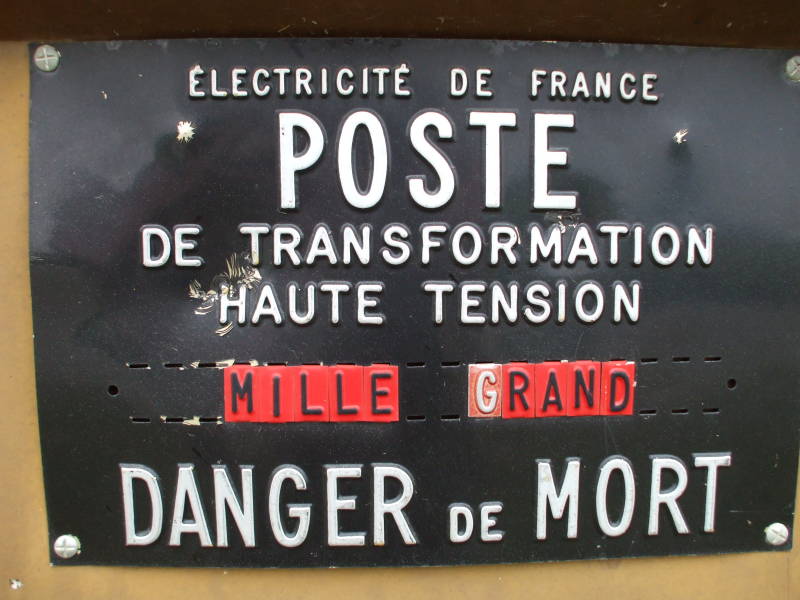
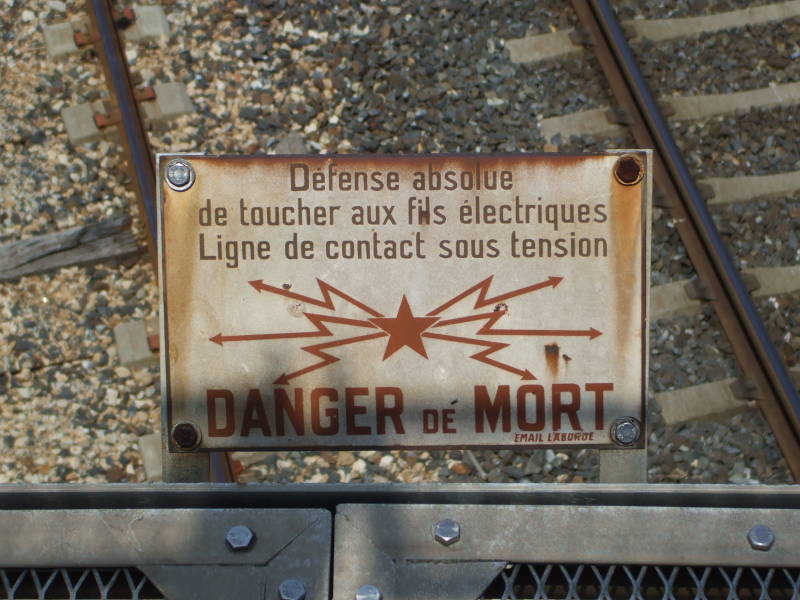
Electricity in the City of Light
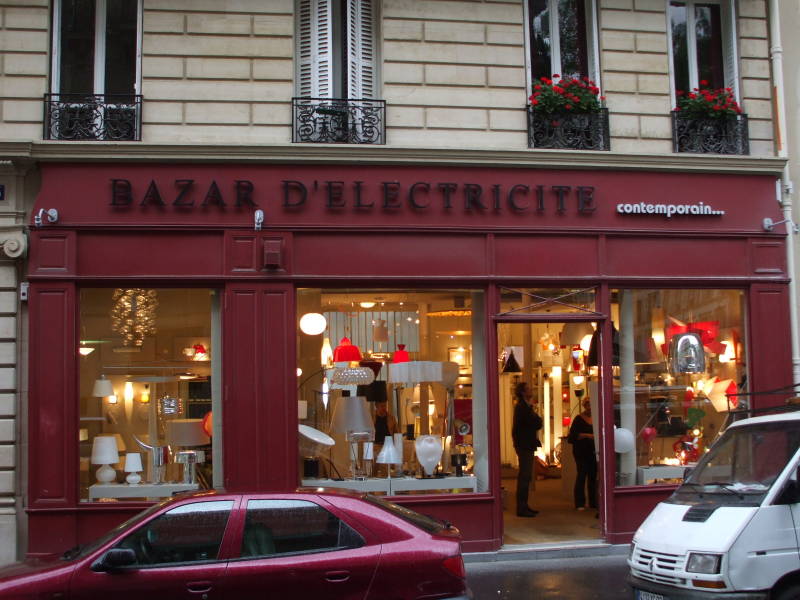
Bazar d'Électricité, a shop in Paris.
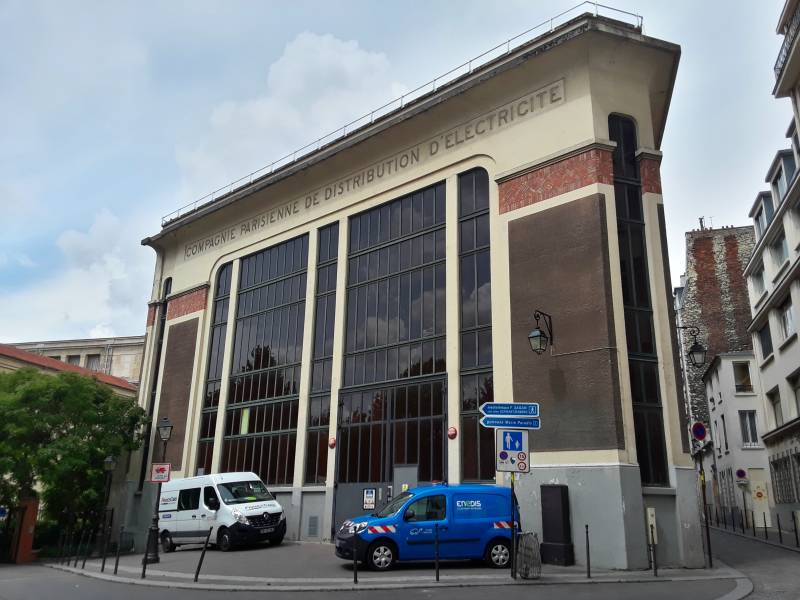
Compagnie Parisienne de Distribution d'Electricity, the Paris Electrical Distribution Company .
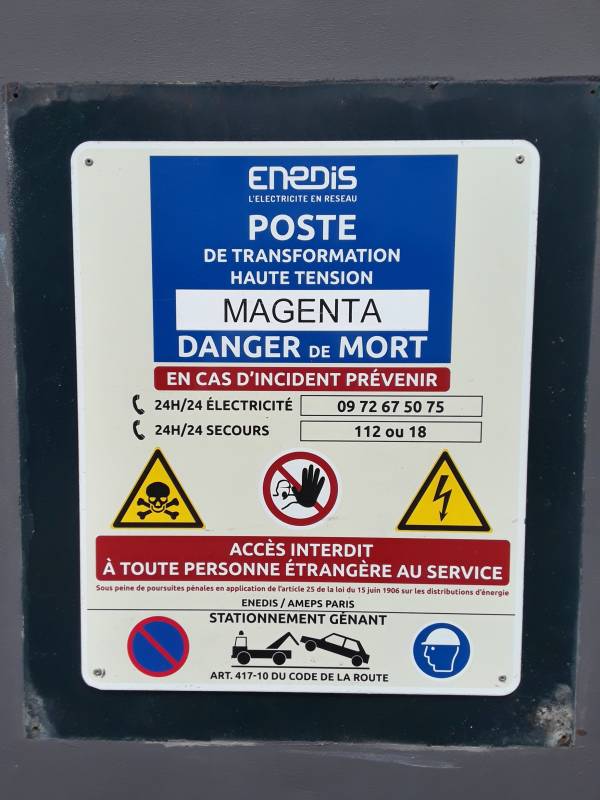
Regional and long-distance trains are powered by electricity.
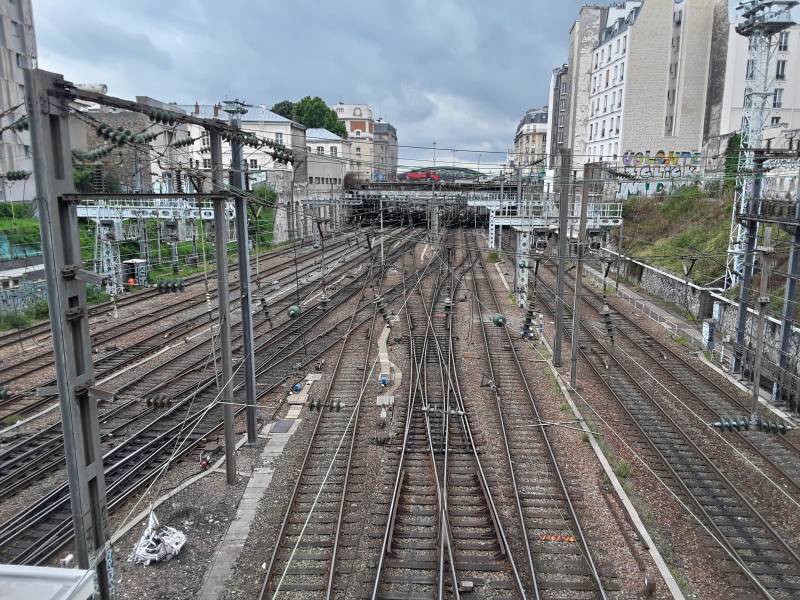
Electrical powered rail lines north of Gare de l'Est in Paris.

Electrical powered rail lines north of Gare de l'Est in Paris. These lines have 25 kV 50 Hz overhead electrical power.
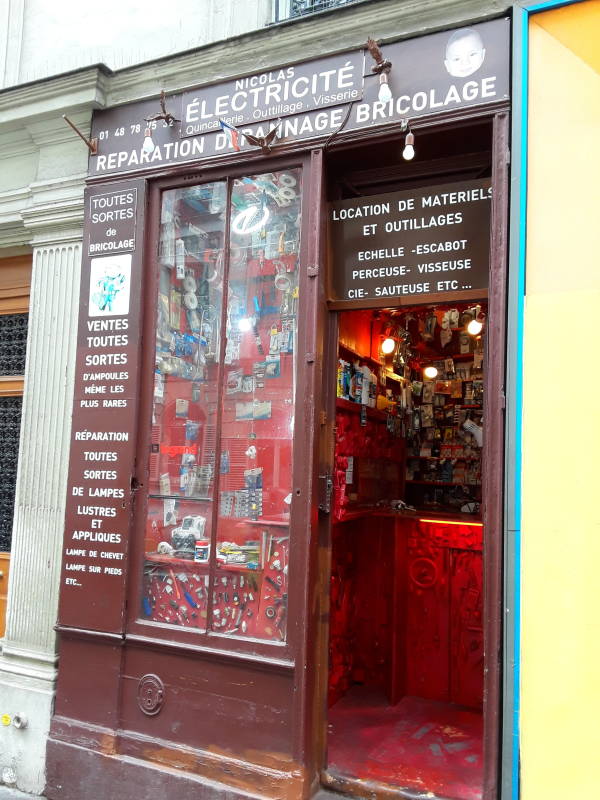
An electrical shop in the 9th arrondissement of Paris.
Electricity Around France

Electrical power point in a mooring area along the Canal du Midi in southern France.

Directions to the local Électricité de France facility near the Canal du Midi in southern France.